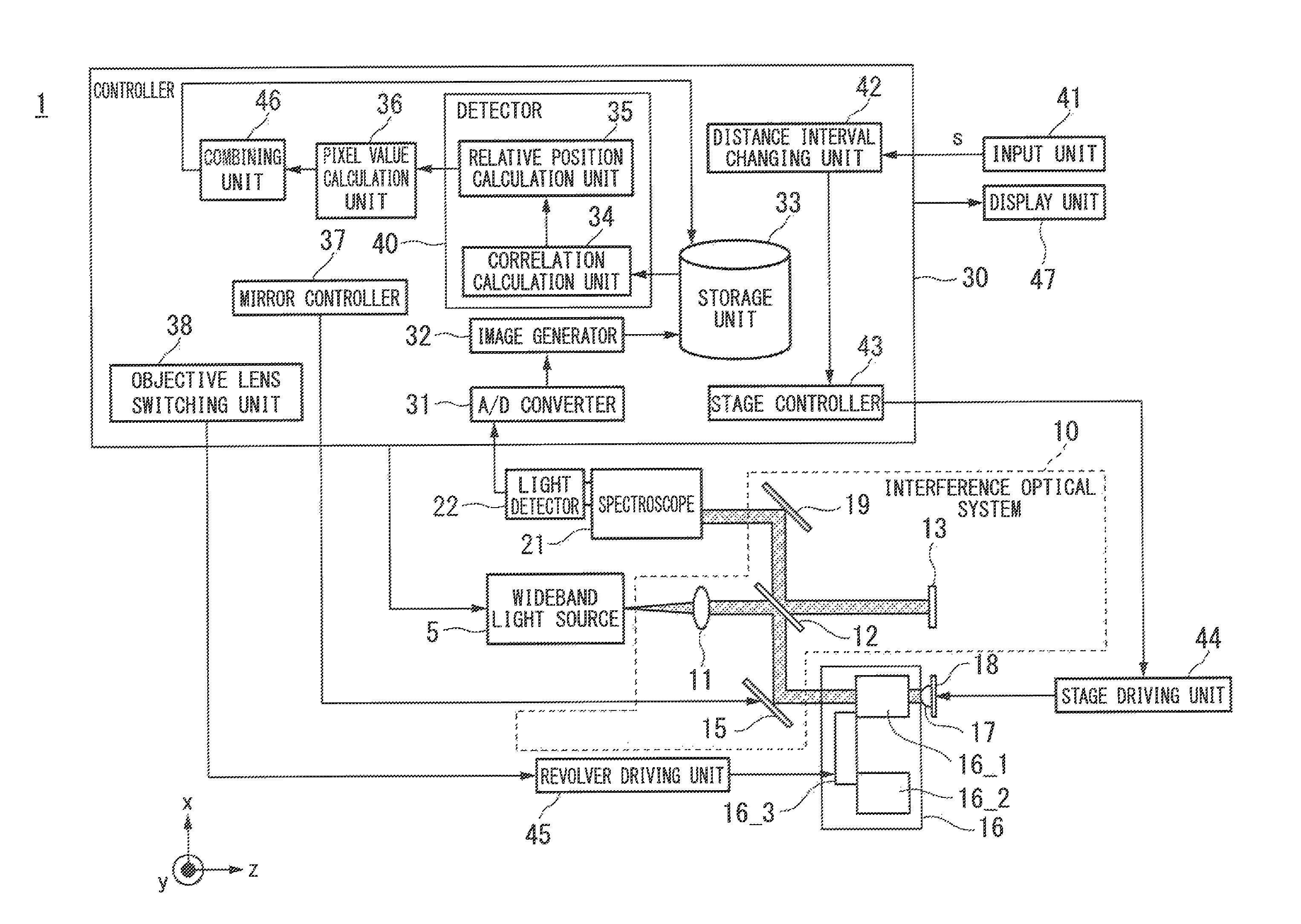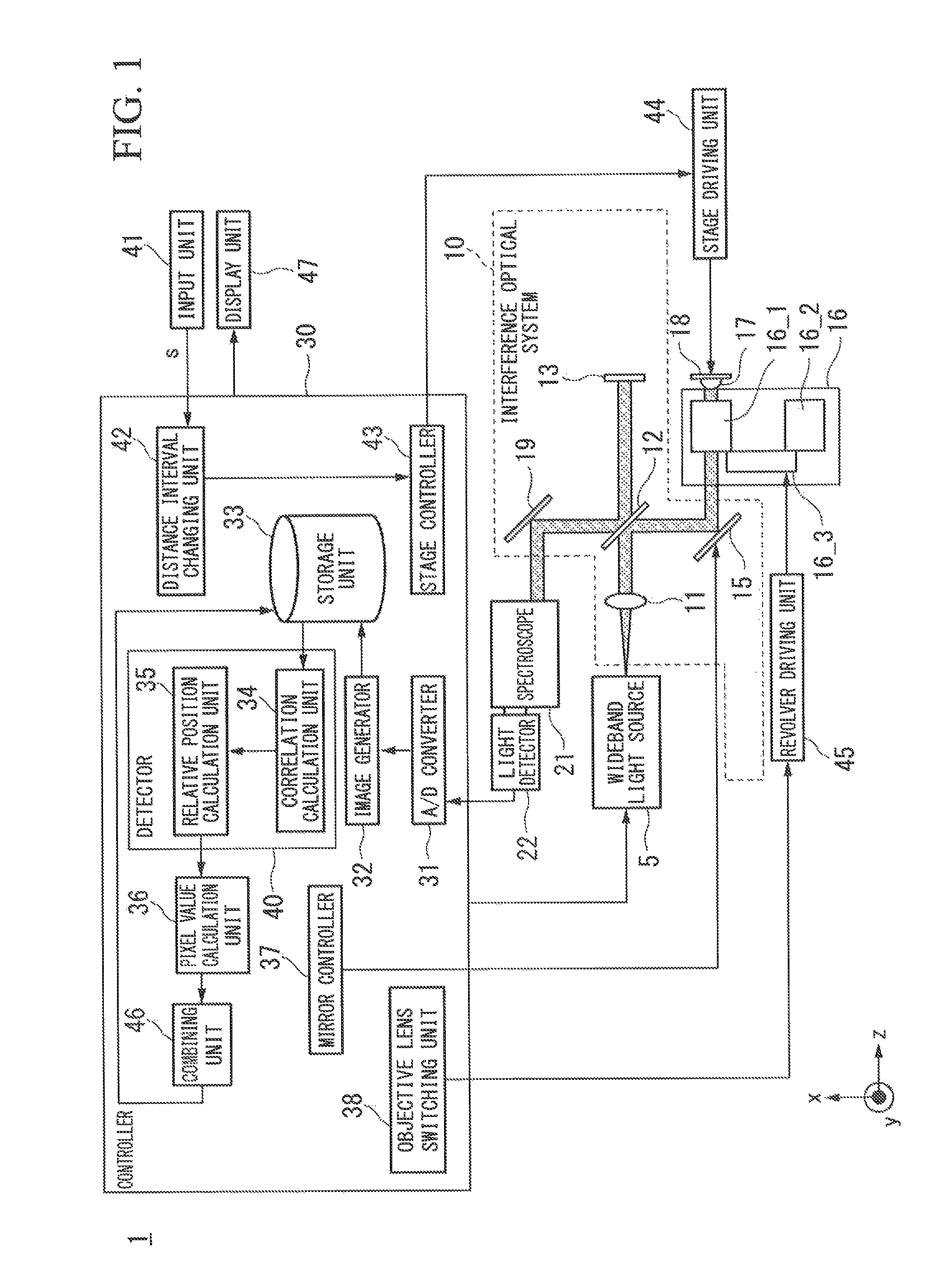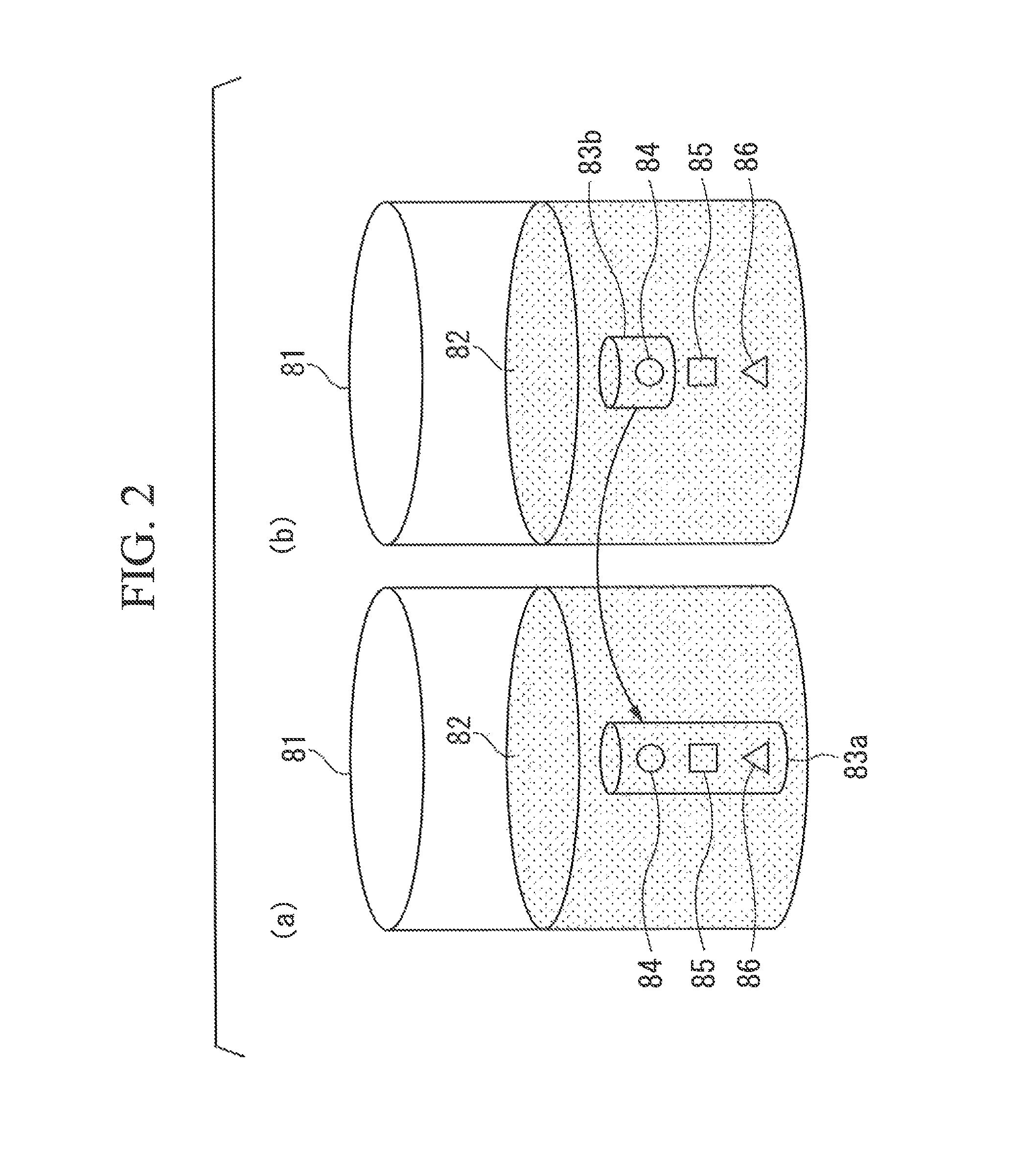Optical coherence tomography observation apparatus, method for determining relative position of images, and program for determining relative position of images
a coherence tomography and observation apparatus technology, applied in the field of optical coherence tomography observation apparatus, can solve the problems of inability to adopt the oct of time domain method, interference of signal light from a specific depth which is scattered from the cells with the reference light, and inability to achieve the effect of wide observation rang
- Summary
- Abstract
- Description
- Claims
- Application Information
AI Technical Summary
Benefits of technology
Problems solved by technology
Method used
Image
Examples
second embodiment
[0117]Subsequently, a second embodiment will be described. In the optical coherence tomography observation apparatus 1 of the first embodiment, the first tomographic image having the wide observation range is obtained by the first objective lens having the low NA, and the second tomographic image having the narrow observation range is obtained by the second objective lens having the high NA. Moreover, the optical coherence tomography observation apparatus 1 determines to which position in the first tomographic image the second tomographic image is allocated, and connects the second tomographic image, and thus, the tomographic image having the wide observation range in the depth direction and high definition is obtained.
[0118]An optical coherence tomography observation apparatus 1b in the second embodiment includes a diaphragm unit 14 (light control unit, switching unit, and selection unit) which reduces the illumination light, and the diaphragm unit 14 further reduces a light flux d...
PUM
| Property | Measurement | Unit |
|---|---|---|
| time domain method | aaaaa | aaaaa |
| full width at half maximum | aaaaa | aaaaa |
| wavelength | aaaaa | aaaaa |
Abstract
Description
Claims
Application Information
 Login to View More
Login to View More - R&D
- Intellectual Property
- Life Sciences
- Materials
- Tech Scout
- Unparalleled Data Quality
- Higher Quality Content
- 60% Fewer Hallucinations
Browse by: Latest US Patents, China's latest patents, Technical Efficacy Thesaurus, Application Domain, Technology Topic, Popular Technical Reports.
© 2025 PatSnap. All rights reserved.Legal|Privacy policy|Modern Slavery Act Transparency Statement|Sitemap|About US| Contact US: help@patsnap.com



